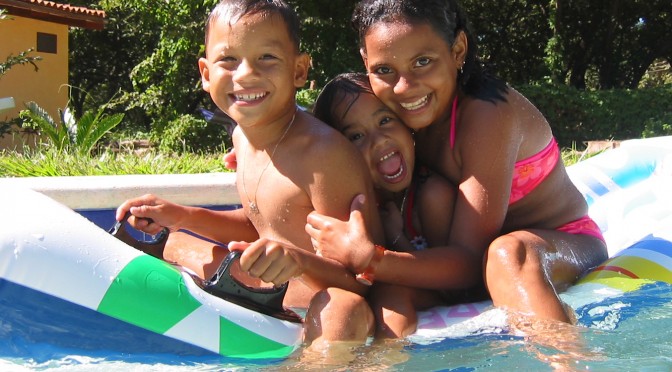Allan Schore, clinical professor of psychiatry at UCLA, and interdisciplinary expert on attachment behavior and its links to affect regulation, believes the science of play is open for major research projects.
According to primatologists Heidi Lyn, Patricia Greenfield, and Sue Savage-Rumbaugh (who study our primate relatives: bonobos and chimpanzees): the human propensity for play is a shared primate characteristic dating back five million years. Play is vital to learning and an integral part of development. But play must be age appropriate—so what’s the best play for infants? Well, before we propose an answer, let’s consider some relevant science.
The body begins to stir in response to stimuli and cues, and in kind our mind must begin to interpret sensations as it integrates them. Emotional intelligence develops in proportion to our accurate awareness of the meaning of our bodily feelings—this is known as “interoception”. Signals come from inner and outer bodily sensations, and mingle and merge in order to maintain inner balance or homeostasis. The system produces an individual brain map of experiences and interpretations: be it a tickle or tummy-ache, boredom or being thrilled. This all happens in the place in the brain called the insula, which is activated even with cravings. It’s the transformational site in mind-body matters—turning emotions into actions. As we register internal and external sensations, we are being “touched” by something. Perhaps, the insula should be called our body’s “touch” scale.
An infant’s ability to regulate emotion develops in response to the dynamic interaction of both the infant’s and adult’s temperamental style. A study led by Laudan B. Jahromi (2004) observed infants’ response to styles of maternal soothing following painful inoculations at 2 and 6 months. The authors reported that the “combination of holding, rocking and vocalizing was most effective at reducing all levels of infant distress.”
The insula is that spot in the brain that creates emotional awareness of self and of any given situation. The onus to develop this capacity is profound, so to are the pleasures from a developed ability. As science writer Sandra Blakeslee explains: “It helps give rise to moral intuition, empathy and the capacity to respond emotionally to music.”
This touch center helps the baby’s immature and dynamic sensory systems, which are consistently at work modifying neural connection patterns. This capacity to make functionally appropriate changes to their sensory brain map is known as plasticity. Indeed, unconscious processes are called upon in the womb and for months thereafter as the primary director of behavior—it is a remnant of our primal past that readies us for an agile response when faced with uncertainty. Sensory plasticity occurs under training or even subliminally when attention and reinforcement is lacking. As even subtle stimuli reaches critical mass, so to speak, they excite the re-organizing and extremely adaptive brain beyond a learning threshold. According to neurobiologists Aaron R. Seitz and Hubert R. Dinse: “Optimization of sensory inputs (such as by synchronization or multisensory stimulation) . . . can also boost signals that normally are insufficient to surpass this learning threshold.”
Research conducted by a team from the psychology department at University of California, Los Angeles and the division of biology at California Institute of Technology, Pasadena showed how our senses work best in unison. One study, led by Ladan Shams, observed illusionary effects from a single visual “flash” of light when it was accompanied by two beeping sounds—the single flash was mis-perceived as two flashes. They argue that this and subsequent research “have shown that sound can modulate visual perception” and “tactile stimuli.” The authors conclude that these findings: “provide further ground for a shift to a more interactive and integrative paradigm of perceptual processing.”
Studies such as these seem to offer support for the idea of dancing with an infant as the most age appropriate play. Combining and integrating your loving embraces, mutual movements, intermittent gazes, and the sounds of music or simply your own singing or speech—is extremely important play. Enjoy!
For more information on the critical nature of play go to:
The National Institute of Play
Ph.D in Parenting
